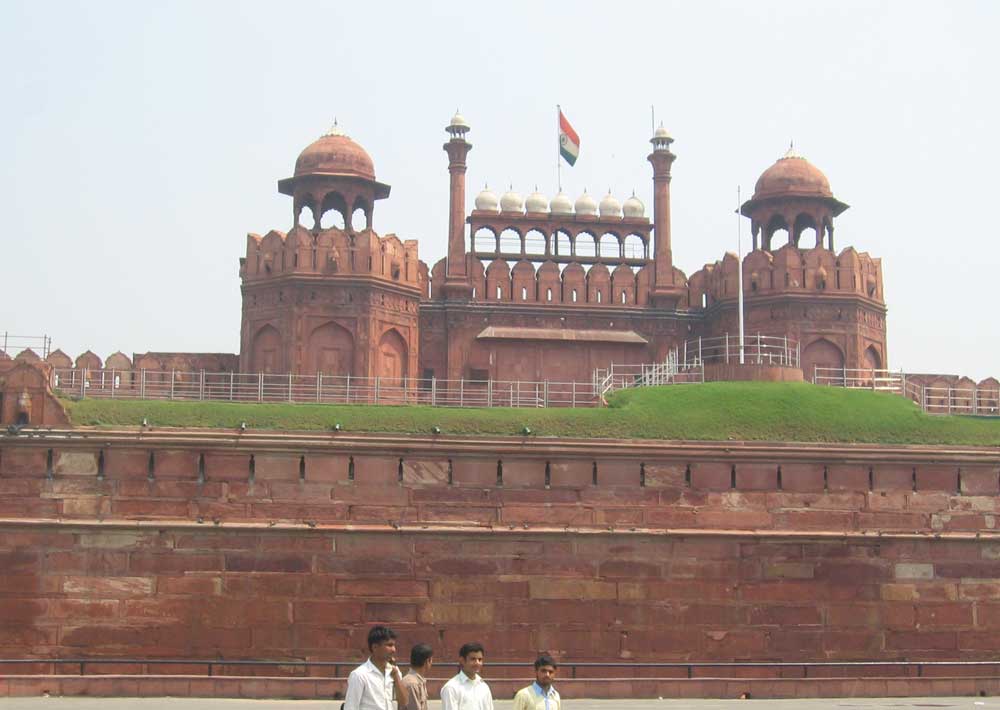
|
|
Lal Qila (Red Fort) - Ramparts & Gateway
|
|
|
|
|
|
|

After transferring his capital to Delhi from Agra in 1638 Shah Jahan commenced the construction of Shahjahanabad and a little later, on the 16th April, 1639, he also laid the foundation of his citadel, Lal-Qila (Lal-Qal'a) or Red Fort, known also by other names in contemporary accounts. It was completed after nine years on the 16th April 1648. The entire fort is said to have cost about one crore of rupees, half of it on the palaces.
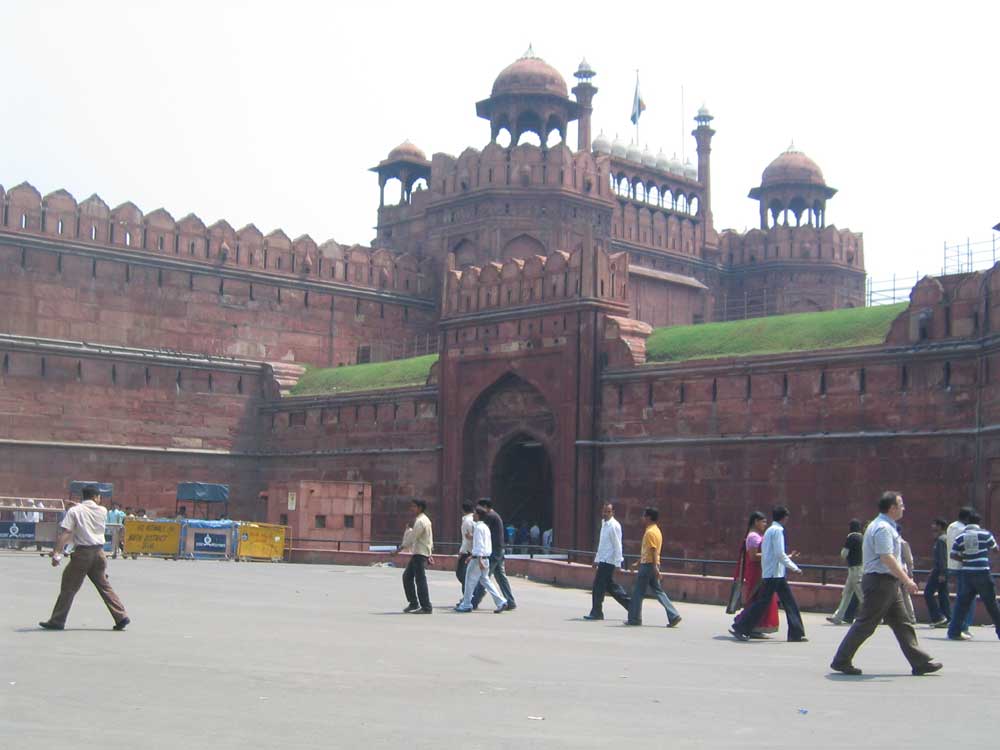 |
|
Lahore Gate |
The Red Fort, so called because of the red colour of the stone largely used in it, is octagonal on plan, with two longer sides on the east and west. On the north the fort is connected by a bridge with Salimgarh. It measures about 900m by 550m, with its rampart walls covering a perimeter of 2.41 km and rising to a height of 33.5 m on the town side and 18m along the river. Outside the ramparts runs a moat, originally connected with the river.
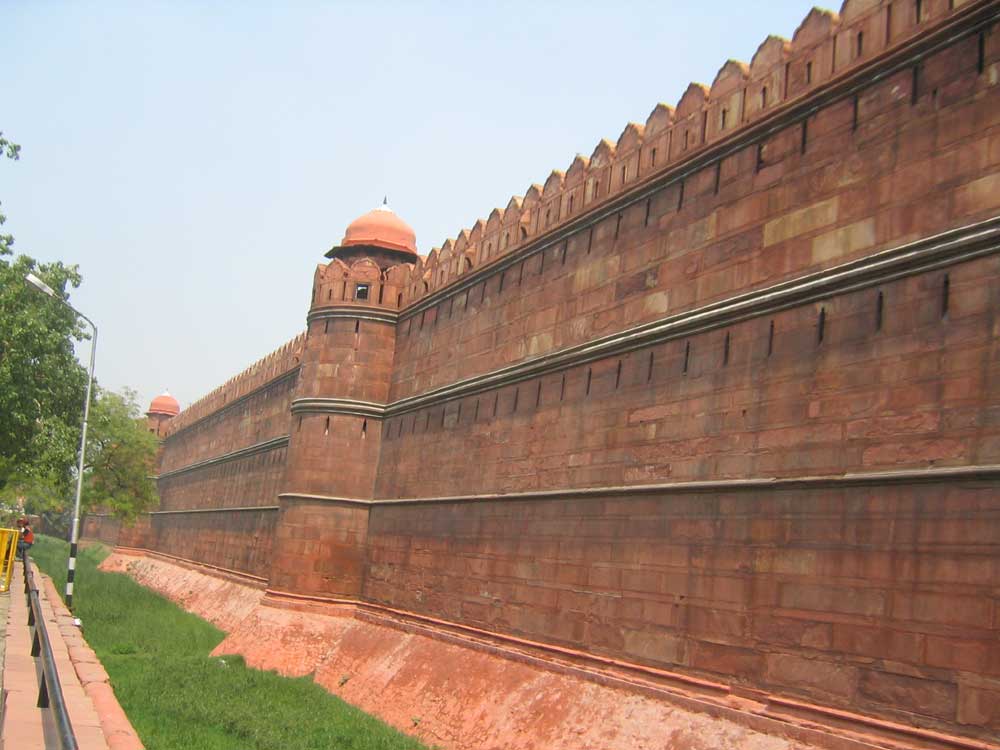 |
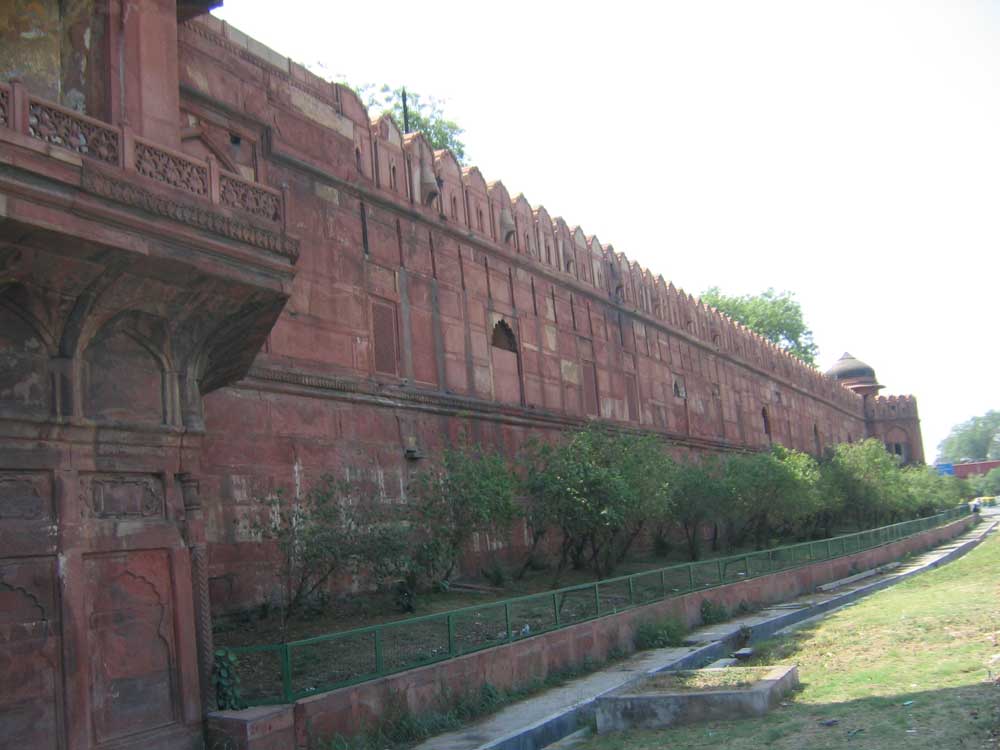 |
|
Western Wall and Moat |
Northern Wall |
The palaces lie along the eastern side of the fort, while two imposing three-storeyed main gateways flanked by semi-octagonal towers and consisting of several apartments are located in the centre of' the western and southern sides and are known as the Lahori and Delhi Gates respectively On the outside, the Delhi gate is flanked by the statues of two elephants renewed in 1903 by Lord Curzon in place of the ones which had been demolished long ago by Aurangzeb. The main entrance to the fort lies through the Lahori Gate and the palaces are reached through a roofed passage, flanked by arcaded apartments called Chhatta-Chowk and now used as shops. The other portions were originally occupied by the residences of the courtiers and the retinue. Both the gates were provided later by barbicans by Aurangzeb. There exist three other entrances on other sides, now largely closed.
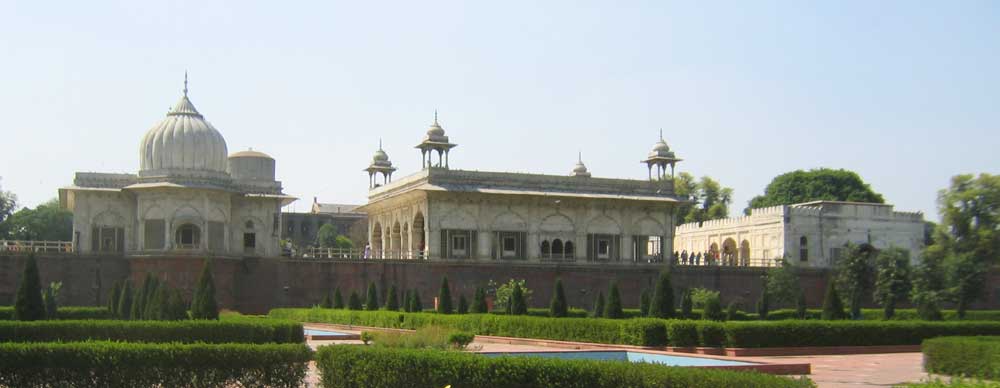 |
|
Palaces along Eastern Wall |
The master-builders of the Red Fort were Hamid and Ahmad while the construction was supervised by other officers, who were amply rewarded by the emperor by appointing them to high positions.
Most of the buildings in the fort were once occupied by the British army and bear scars of vandalistic acts inflicted on them. Quite a number of the structures were in bad state and were removed after the Mutiny.
|
|